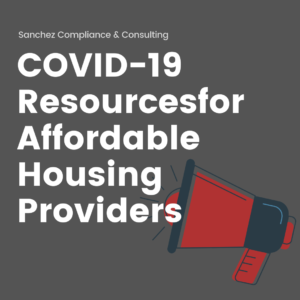We know that public housing property managers have their hands full. Not only do you take on the day-to-day aspects of serving your tenants, but you also have to keep track of a long list of compliance and regulatory requirements. This includes conducting annual reviews for many of your rent components, like the LIHTC utility allowance.
Keeping track of utility allowances can be a challenge if you don’t have a plan. Here’s everything you need to know to make your next LIHTC annual utility allowance review successful.
What is the HUD Annual Utility Allowance?
The Department of Housing and Urban Development (HUD) determines the “total resident payment” for tenants of low-income housing tax credit (LIHTC) properties as the combined total of rent and basic utilities. The total resident payment is one of the many critical factors in calculating how much rent your tenants will pay.
The LIHTC utility allowance represents the reasonably expected costs of utilities, though which services it represents will vary from region to region.
These are the general utilities that LIHTC might provide an allowance for with affordable housing properties:
- Electricity
- Garbage collection
- Gas or cooking and heating fuel
- Sewage services
- Water
The utility allowance does not include telephone services, nor does it include any additional features like cable or internet services. However, you can directly connect your tenants with local agencies that might offer cash allowances or vouchers for these services.
3 Reasons the LIHTC Annual Utility Allowance Review is Critical
Preparing for your LIHTC annual utility allowance review requires a bit of due diligence. There are three critical reasons to get ready for this compliance project ahead of time.
1. Aligns Your Income and Expenses
The LIHTC utility allowance is a component of the rent payment calculation. That means that changes in the allowance calculations can impact the amount of rent your residents pay.
An annual review allows you to make adjustments to your utility schedule before any crucial deadlines. The allowance factors are updated every year, so you might want to schedule your review around them.
2. Informs About Recent Regulatory Updates
Both HUD and the Texas Department of Housing and Community Affairs (TDHCA) make changes to utility allowance regulations routinely. These might be changes to allowance factors or policy.
Your LIHTC annual utility allowance review should incorporate a thorough investigation of any updates to HUD or TDHCA policies, as well as a plan for implementing the updates.
3. Encourages Accurate Compliance Measures
Compliance is a strict requirement for public housing agencies (PHAs) and affordable housing properties that accept housing vouchers. Failure to maintain compliance can disqualify your property from federal funds.
The TDHCA provides a list of resources to help LIHTC properties and landlords stay in compliance. A compliance consultant can also help you manage a complete plan for managing regulatory updates.
Choose a Compliance Consultant with Affordable Housing Experience
Maintaining robust compliance standards is a cornerstone for anyone that works with affordable housing. An affordable housing compliance consultant can help you create a compliance program that protects your organization and your residents.
Need help creating or maintaining a compliance plan? Contact Sanchez Compliance & Consulting today to review your options.


